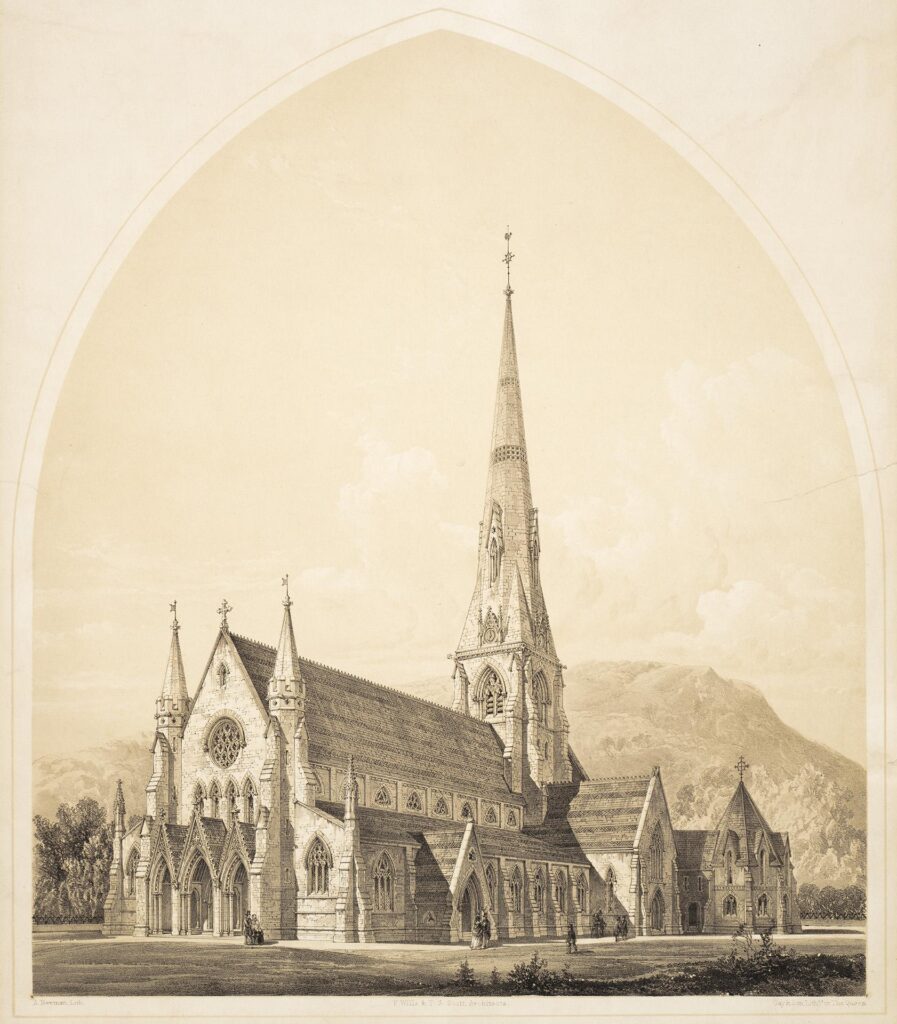
We have no information on the arrival date of the ship carrying Sarah Hickson, her 3 children, her parents, and her mother-in-law. We know from the part of Frances Hickson’s letter written on May 17, 1850 that they were supposed to be in Newfoundland by the next day (May 18th), but that the winds had not been favorable.

Most of the immigrants into Canada in 1850 went through Quebec City. The port of entry was Grosse Ile, a small island situated in the St. Lawrence river just downstream from Quebec City. Because disease was so prevalent among ships coming to port, an isolated spot was needed to process, evaluate, and quarantine any incoming sick passengers – very similar to the future Ellis Island in the United States. We know from Frances’ letter, that she, Sarah, and the children had all been ill at some point in the journey from various maladies more serious than seasickness. So we can imagine that they might have met with some issues when they arrived at Grosse Ile.

A Devastating Tragedy

According to Frances’ letter, “there had been a great deal of sickness on board and one death”. Everyone among her family had been afflicted with various illnesses on the voyage over. The two youngest, Clara and William had suffered from Scarletina, or Scarlet Fever, a bacterial illness that features a bumpy, bright red rash that covers most of the body. She mentioned that both children also had issues with their eyes. Sitting next to Frances on deck as she wrote her letter was Sarah, the children’s mother. Sarah was doing poorly.
So, if the sicknesses and their symptoms were still raging a few days away from landfall, it is easy to imagine that the family did not process quickly through Grosse Ile. The crowded conditions among other sick passengers probably made their symptoms even worse while they waited through quarantine for clearance to enter the country. In fact, just 3 years earlier, in 1847, a typhoid epidemic overwhelmed the small island of Grosse Ile and over 5400 immigrants perished.
Apparently, at some point, family did process successfully into the country at Grosse Ile1A search in the online database of Grosse Ile immigrants has yielded no results to date. They then traveled 170 miles up the St. Lawrence as far as Montreal. This is when disaster struck.
The young mother, Sarah Mabin Hickson, who was “doing poorly” at times on the ship, had a relapse and never recovered. Sarah Hickson died on June 14, 1850, aged 29, and was buried in the Anglican Christ Church Cathedral Cemetery in Montreal. All we know is from this short burial record.

On to Ontario
Sarah’s death must have been a devastating blow for her young children and her parents and mother-in-law. But, they still had a long way to go. So now it was up to the 3 grandparents, all in their late 60’s, to escort these 3 small children to their waiting father and aunt in Ontario – southwestern Ontario, to be exact. The strip of Ontario just north of Lake Erie. All indications are that, when they arrived around 1848, the Lawsons and William T. Hickson (the children’s father) went immediately to this part of Southwestern Ontario, which was considered Upper Canada in this time (i.e. up river on the St. Lawrence). In the 1851 census (actually taken in early 1852), there is a Hugh Lawson in Brandford which is in Oxford County, Ontario just west of the town of Hamilton. William Hixon (sic) was a laborer, born in England, widowed, and was already situated in London, Ontario — where the entire family eventually settled.

So, that brings up the question as to how this grieving family would travel in Canada in 1850 and what route they would take. In 1850, there were only 66 miles of rail laid in Canada. So, the most efficient way to travel was by river boat up the St. Lawrence as far as possible and then go by coach or horseback to the final destination. Remember that Niagara Falls is between Lake Ontario and Lake Erie. So the most likely mode of travel was by steamboat from Montreal up the St. Lawrence and across Lake Ontario to Hamilton and the rest of the way by stagecoach – about 400 miles total.
London, Ontario – a new London
The Hicksons and Lawsons in the early 1850’s in Upper Canada are pretty much a mystery. By 1857, all families were settled in the town of London, Ontario and we know that William Thomas was there in early 1852. Hugh Lawson died in 1854 and was buried in London. Sadly, we do not know what happened to our matriarch, Frances Hickson. After she put her pen down and mailed her letter from the ship, we have not found her name anywhere in the records in Canada, and we imagine that she died either before the family finished their journey or in the first few years after arrival.
So, we still have one more Hickson family left back in the “old” London — in England. Let’s get them on a ship and over the ocean before we continue chronicling this family’s life in the New World…….
- 1A search in the online database of Grosse Ile immigrants has yielded no results to date
